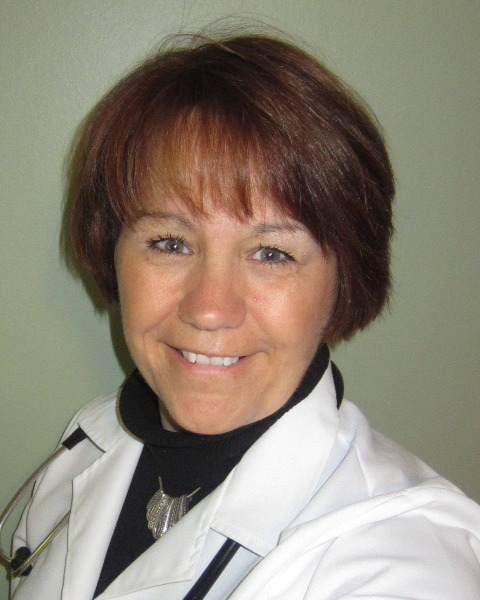Quality Improvement
(P19) Improving Patient Care: A Transformative Outcomes Based Model

Angela Scardina, DNP, RN, APRN
Assistant Professor
University of Toledo
Curtice, Ohio
Tatiana Masyk, MD, FAAFP, CMD
Community Medical Director
WellBe
Sylvania, Ohio
Primary Author(s)
Author(s)
Objective/Aim: Improve medical management and reduce unnecessary hospitalizations of geriatric home-bound patients over 5 months by leveraging a highly interactive & interdisciplinary team of providers. Providers included WellBe physician, nurse practitioners, social workers and pharmacists; Quik Medic acute paramedic service. Patients resided in assisted living, SNF or their home.
Background: Our community population consists of home-bound medically complex, frail geriatric patients with historically high utilization of emergency room and hospital services and prescribed medications. This high utilization resulted in higher costs of care and poor health outcomes. Alternative, less expensive methods of effectively treating these patients were identified, but would require an integrated team of providers.
Quality Improvement Methods: The interdisciplinary team (IDT) utilized Lean Six Sigma as the evidenced-based framework for the project. The IDT mapped the problem and process for identifying the high-risk population & the management of older adults with multiple co-morbid conditions. Opportunities for improved communication; inclusion of paramedic services and other ancillary services to address acute issues in the home were identified. The IDT created a step-by-step process for rapid deployment of acute paramedic services to evaluate patients at risk for hospitalization and communicate via telemedicine with physician or NP providers. Additional services implemented included stat lab work, EKG's, administration of stat medication, stat respiratory treatments and follow up interventions. Measurements that were closely tracked included the number of patient encounters, the type of visit, the outcome of the intervention, patient/provider satisfaction, admission rates and cost savings. Data was monitored through an integrated, interactive tracking tool. The program was evaluated after a 5-month period of time.
Results : There were 481 patient encounters over a 5 month period: 341 required urgent interventions with only 21 resulting in an ER visit.
12 of the 21 required admission; 9 used ER only. 320 patients did not require an ER visit: resulting in an average net-savings per urgent encounter of $9,974.00 per encounter. The program demonstrated a significant cost savings of $320, 813 per month or 1.7 million over the 5 months.
Conclusions: The program resulted in a significant reduction in utilization of ER or urgent care visits, substantial cost savings, better coordination of care between Quik Medic and Nurse Practitioners, improved patient and provider satisfaction. The next steps for this program include the development of a bundled visit to include HEDIS quality measures, expansion of the program to other states, revision of the data collection tool to facilitate data collection at a national level. Identification of provider educational opportunities to optimize the patient visit and reduce acute care utilization and exploration of technology opportunities to reduce connectivity issues.
Background: Our community population consists of home-bound medically complex, frail geriatric patients with historically high utilization of emergency room and hospital services and prescribed medications. This high utilization resulted in higher costs of care and poor health outcomes. Alternative, less expensive methods of effectively treating these patients were identified, but would require an integrated team of providers.
Quality Improvement Methods: The interdisciplinary team (IDT) utilized Lean Six Sigma as the evidenced-based framework for the project. The IDT mapped the problem and process for identifying the high-risk population & the management of older adults with multiple co-morbid conditions. Opportunities for improved communication; inclusion of paramedic services and other ancillary services to address acute issues in the home were identified. The IDT created a step-by-step process for rapid deployment of acute paramedic services to evaluate patients at risk for hospitalization and communicate via telemedicine with physician or NP providers. Additional services implemented included stat lab work, EKG's, administration of stat medication, stat respiratory treatments and follow up interventions. Measurements that were closely tracked included the number of patient encounters, the type of visit, the outcome of the intervention, patient/provider satisfaction, admission rates and cost savings. Data was monitored through an integrated, interactive tracking tool. The program was evaluated after a 5-month period of time.
Results : There were 481 patient encounters over a 5 month period: 341 required urgent interventions with only 21 resulting in an ER visit.
12 of the 21 required admission; 9 used ER only. 320 patients did not require an ER visit: resulting in an average net-savings per urgent encounter of $9,974.00 per encounter. The program demonstrated a significant cost savings of $320, 813 per month or 1.7 million over the 5 months.
Conclusions: The program resulted in a significant reduction in utilization of ER or urgent care visits, substantial cost savings, better coordination of care between Quik Medic and Nurse Practitioners, improved patient and provider satisfaction. The next steps for this program include the development of a bundled visit to include HEDIS quality measures, expansion of the program to other states, revision of the data collection tool to facilitate data collection at a national level. Identification of provider educational opportunities to optimize the patient visit and reduce acute care utilization and exploration of technology opportunities to reduce connectivity issues.
